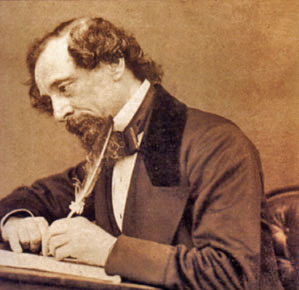The tumblr - sex videosM87 galaxy is monstrous.
It contains several trillionsof stars, compared to our Milky Way's hundreds of billions. And the supermassive black hole at its center is shooting an outstretched beam of energy into space. The Hubble Space Telescope, operated by NASA and the European Space Agency, has captured a new image of this energetic cosmic event, which produces a beam of superheated gas 3,000 light-years long (a single light-year is nearly 6 trillion miles).
NASA calls this jet "blowtorch-like," and it seems to be triggering many stars near its trajectory to erupt.
"We don't know what's going on, but it's just a very exciting finding," Alec Lessing of Stanford University, who led the research into the finding, said in an agency statement. "This means there's something missing from our understanding of how black hole jets interact with their surroundings."
SEE ALSO: NASA scientist viewed first Voyager images. What he saw gave him chills.Black holes themselves produce no light. But material can rapidly spin around black holes, forming a vibrant "accretion disk" that radiates light. And, sometimes material falling into a black hole can "become rerouted" into two jets, firing in opposite directions, NASA explained.
In the Hubble telescope image below, the colossal elliptical galaxy M87, which is shaped like a giant egg, looks like "a translucent, fuzzy white cotton ball," ESA explained. The jet, as you can see, is the wavy blue beam blasting out from the galactic core, home to the supermassive black hole (it has the mass of 5.4 billionsuns).
 A Hubble view of a vibrant jet shooting out from the galaxy M87. Credit: NASA / ESA / STScI / Alec Lessing (Stanford University) / Mike Shara (AMNH) / Acknowledgment: Edward Baltz (Stanford University) // Image Processing: Joseph DePasquale (STScI)
A Hubble view of a vibrant jet shooting out from the galaxy M87. Credit: NASA / ESA / STScI / Alec Lessing (Stanford University) / Mike Shara (AMNH) / Acknowledgment: Edward Baltz (Stanford University) // Image Processing: Joseph DePasquale (STScI) This Tweet is currently unavailable. It might be loading or has been removed.
As the jet shoots through the galaxy, astronomers suspect it's triggering a type of stellar explosion called a "nova." These eruptions happen in double-star systems with an aging star — which is bloated and shedding its layers — and a white dwarf star, which is the hot core of a sun-like star that has shed its mass. The swollen star dumps material (hydrogen) on the white dwarf. "When the dwarf has tanked up a mile-deep surface layer of hydrogen that layer explodes like a giant nuclear bomb," the agency explained. And then the gradual process renews.
Compared to the rest of the galaxy, the researchers found twice as many novae happening in the vicinity of that vivid blue jet than elsewhere in M87.
"There's something that the jet is doing to the star systems that wander into the surrounding neighborhood," Lessing said. "Maybe the jet somehow snowplows hydrogen fuel onto the white dwarfs, causing them to erupt more frequently." However, a number of other possibilities could explain it, too.
Astronomers will keep watching this energetic region of space. It's a cosmic mystery, slowly unravelling.
Topics NASA
(Editor: {typename type="name"/})
 The Strongman Con: How to stop worrying about Trump stealing the election
The Strongman Con: How to stop worrying about Trump stealing the election
 Tonight: “Get in the back of the van!” by Sadie Stein
Tonight: “Get in the back of the van!” by Sadie Stein
 Never Fear! Your Mugs are Coming! by The Paris Review
Never Fear! Your Mugs are Coming! by The Paris Review
 Super Bowl LIX livestream: Watch Eagles vs Chiefs on Tubi
Super Bowl LIX livestream: Watch Eagles vs Chiefs on Tubi
NYT mini crossword answers for January 3, 2025
 The Mini is a bite-sized version of The New York Times' revered daily crossword. While the crossword
...[Details]
The Mini is a bite-sized version of The New York Times' revered daily crossword. While the crossword
...[Details]
Wordle today: Here's the answer and hints for May 30
 Can't get enough of Wordle? Try Mashable's free version now P
...[Details]
Can't get enough of Wordle? Try Mashable's free version now P
...[Details]
Trashing Tolkien, Finding Tom Sawyer by Sadie Stein
 Trashing Tolkien, Finding Tom SawyerBy Sadie SteinSeptember 25, 2012On the ShelfThe real Tom Sawyer.
...[Details]
Trashing Tolkien, Finding Tom SawyerBy Sadie SteinSeptember 25, 2012On the ShelfThe real Tom Sawyer.
...[Details]
Dead Authors at Fashion Week: Part 3 by Katherine Bernard
 Dead Authors at Fashion Week: Part 3By Katherine BernardSeptember 20, 2012Arts & CultureVirginia
...[Details]
Dead Authors at Fashion Week: Part 3By Katherine BernardSeptember 20, 2012Arts & CultureVirginia
...[Details]
 TL;DR:A wide range of ChatGPT courses are available to take for free on Udemy. Udemy is arguably the
...[Details]
TL;DR:A wide range of ChatGPT courses are available to take for free on Udemy. Udemy is arguably the
...[Details]
Twitter spams Trump's COVID tweet with copypasta in Amharic
 Twitter users flooded the president's mentions with creepy passages and haunting images after he ann
...[Details]
Twitter users flooded the president's mentions with creepy passages and haunting images after he ann
...[Details]
The Jewish Vicar by Jon Canter
 The Jewish VicarBy Jon CanterSeptember 26, 2012First PersonAn old Jewish man is hit by a car. As he
...[Details]
The Jewish VicarBy Jon CanterSeptember 26, 2012First PersonAn old Jewish man is hit by a car. As he
...[Details]
Dreaming in Welsh by Pamela Petro
 Dreaming in WelshBy Pamela PetroSeptember 18, 2012On LanguageHiraeth.It’s pronounced “here-eyeth” (r
...[Details]
Dreaming in WelshBy Pamela PetroSeptember 18, 2012On LanguageHiraeth.It’s pronounced “here-eyeth” (r
...[Details]
Nvidia's Digits is a tiny AI supercomputer for your desk
 With all eyes on Nvidia's new graphics cards (and for good reason - these things are pretty powerful
...[Details]
With all eyes on Nvidia's new graphics cards (and for good reason - these things are pretty powerful
...[Details]
Doyle’s Journals, Rowling’s House by Sadie Stein
 Doyle’s Journals, Rowling’s HouseBy Sadie SteinSeptember 24, 2012On the ShelfCheck out the journals
...[Details]
Doyle’s Journals, Rowling’s HouseBy Sadie SteinSeptember 24, 2012On the ShelfCheck out the journals
...[Details]
Super Bowl LIX livestream: Watch Eagles vs Chiefs on Tubi

Fake Books, Fictional Detectives by Sadie Stein

接受PR>=1、BR>=1,流量相当,内容相关类链接。